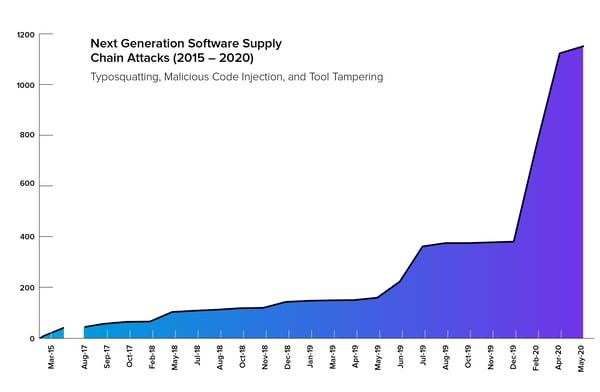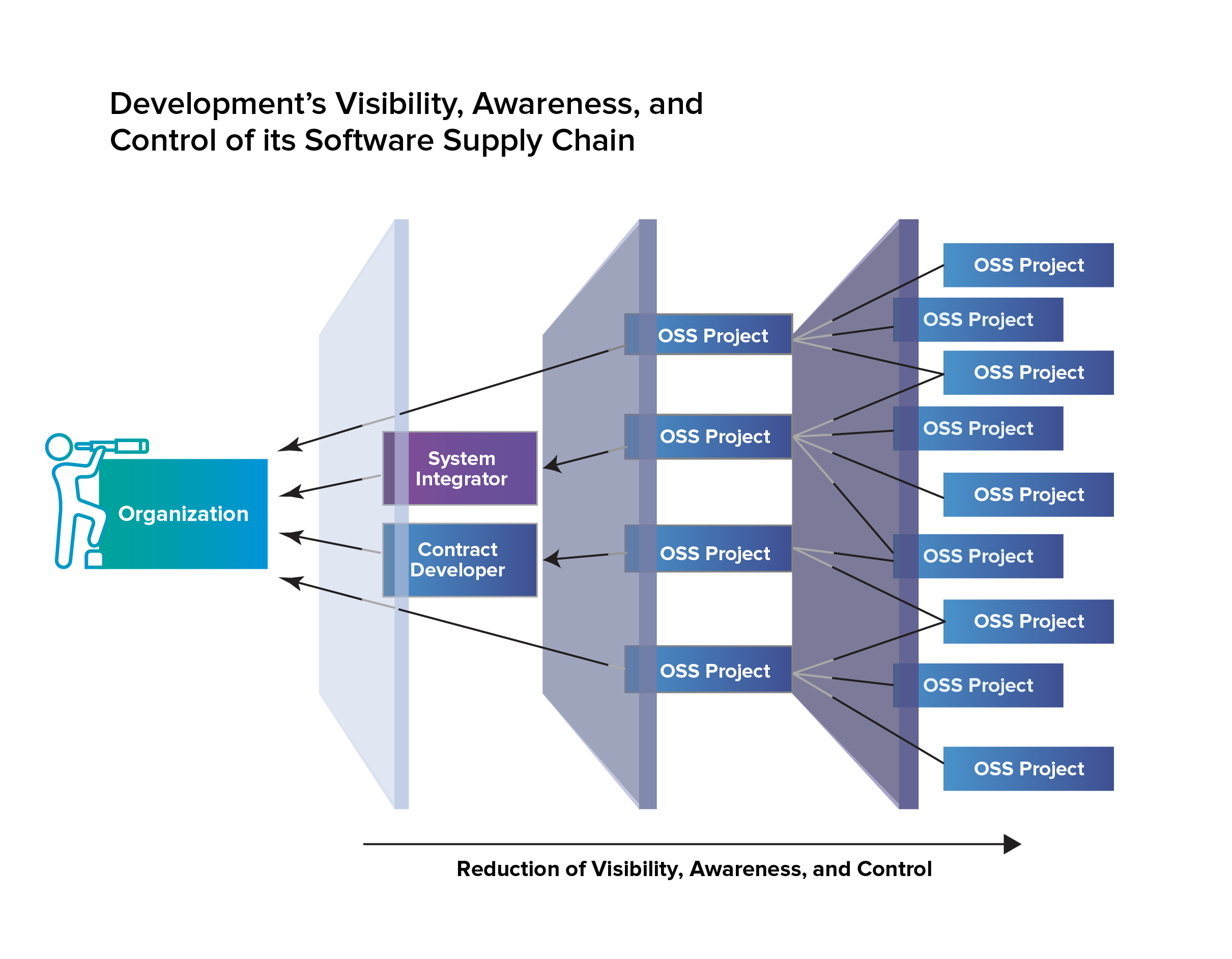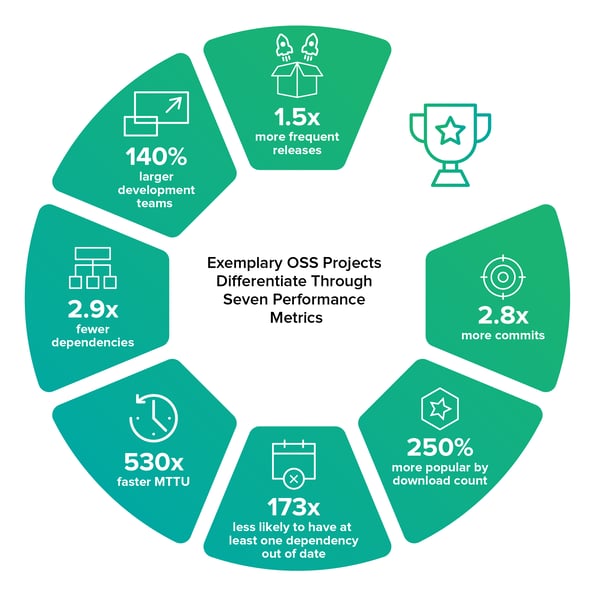Since December 17, 2020, when federal agencies and enterprises alike learned of the malicious software attack on SolarWinds’ Orion platform, some have been asking, “How do I avoid becoming the next SolarWinds?”
Exemplary development teams already lead the way, focusing on how software supply chain hygiene, governance, and security can minimize the risk from a similar style of attack that we saw at SolarWinds. Our 2020 State of the Software Supply Chain Report highlights software development trends for open source and third party components and what exemplary teams are doing to minimize the risk from a software supply chain attack similar to what we saw at SolarWinds.

SolarWinds isn’t the first company to experience a software supply chain attack focused on the build process. In our sixth annual State of the Software Supply Chain Report, we've documented a 430% increase in software supply chain related attacks. For instance, in May 2020, Octopus Scanner was discovered by GitHub as having IDEs injecting malicious code as part of the build process. Similarly, Gitpaste-12 leveraged trustworthy sites like GitHub and Pastebin to host itself and maliciously infect users.

SolarWinds isn’t the first company to experience a software supply chain attack focused on the build process. In our sixth annual State of the Software Supply Chain Report, we've documented a 430% increase in software supply chain related attacks. For instance, in May 2020, Octopus Scanner was discovered by GitHub as having IDEs injecting malicious code as part of the build process. Similarly, Gitpaste-12 leveraged trustworthy sites like GitHub and Pastebin to host itself and maliciously infect users.
The average Java development organization relies on over 3,500 open source projects, including 14,000 unique component releases. The average JavaScript developer downloads 90,000 npm packages packages annually. Documenting where these projects are sourced is key to understanding who can nefariously access and alter elements of the build process.

The average Java development organization relies on over 3,500 open source projects, including 14,000 unique component releases. The average JavaScript developer downloads 90,000 npm packages packages annually. Documenting where these projects are sourced is key to understanding who can nefariously access and alter elements of the build process.


The State of the Software Supply Chain Report has shown how high performing software development teams have improved security outcomes. In addition to mapping their software supply chains, these teams maintain automated checks on the quality of software components and packages moving through them, and update the components to the latest releases on a regular basis. As a result, these teams update their code more often and generally stay more secure.

The State of the Software Supply Chain Report has shown how high performing software development teams have improved security outcomes. In addition to mapping their software supply chains, these teams maintain automated checks on the quality of software components and packages moving through them, and update the components to the latest releases on a regular basis. As a result, these teams update their code more often and generally stay more secure.
The Advanced Development Pack allows developers to engage in proactive dependency management practices without losing the momentum of agile software development. The Advanced Development Pack makes developers’ lives easier by allowing them to:
Save time by knowing what components to avoid from the start of a project, whether it doesn’t fit policy or is associated with abnormal commit behavior.
The Advanced Development Pack allows developers to engage in proactive dependency management practices without losing the momentum of agile software development. The Advanced Development Pack makes developers’ lives easier by allowing them to:
Save time by knowing what components to avoid from the start of a project, whether it doesn’t fit policy or is associated with abnormal commit behavior.
Sonatype Headquarters - 8161 Maple Lawn Blvd #250, Fulton, MD 20759
Tysons Office - 8281 Greensboro Drive – Suite 630, McLean, VA 22102
Australia Office - 60 Martin Place Level 1, Sydney, NSW 2000, Australia
London Office -168 Shoreditch High Street, E1 6HU London
Subscribe for all the latest software security news and events
Copyright © 2008-present, Sonatype Inc. All rights reserved. Includes the third-party code listed here. Sonatype and Sonatype Nexus are trademarks of Sonatype, Inc. Apache Maven and Maven are trademarks of the Apache Software Foundation. M2Eclipse is a trademark of the Eclipse Foundation. All other trademarks are the property of their respective owners.
Terms of Service Privacy Policy Modern Slavery Statement Event Terms and Conditions Do Not Sell My Personal Information